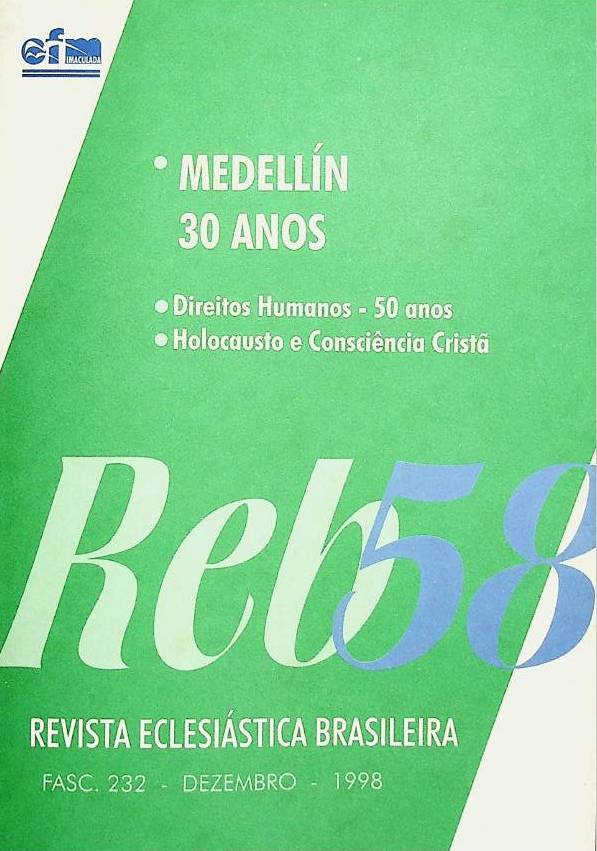O holocausto e a consciência cristã
uma reflexão a partir do documento do Vaticano
DOI:
https://doi.org/10.29386/reb.v58i232.2344Abstract
O artigo analisa o documento do Vaticano sobre o Holocausto, situando-o na complexa história das relações cristão-judaicas. Quer mostrar como se deu a passagem do Cristo judeu à cristandade antijudaica, terreno fértil para outras formas de anti-semitismo que culminaram no nazismo e na Shoah. Em seguida analisa os pontos controvertidos do documento: a ação da Igreja nos anos 30 e na Segunda Guerra; a condenação do anti-semitismo, do nazismo e os pontos de ambiguidade e colaboração; e a atuação de Pio XII. Compara o documento da Santa Sé com os pronunciamentos dos bispos alemães (1995) e dos bispos franceses (1997) sobre o tema, investigando a eclesiologia subjacente. Por fim, contempla as perspectivas de diálogo entre judeus e cristãos.
Abstract: The article analizes the Vatican document on the Holocaust, putting it in the complex Christian-Jewish relationship throughout History. It tries to show how Christianity went out from the Jewish Christ to the unjewish Christendom, a good soil to otherforms of anti-Semitism that led to Nazism and the Shoah. Then, it focus on the controversial points of the document: the action of the Church in the 30’s and in the Second World War; the condemnation of anti-Semitism, of Nazism and the leveis of ambiguity and collaboration; as well as the action of Pius XII. It collates the Holy See s document with statements ofthe German bishops (1995) and the French bishops (1997) about that theme, investigating the ecclesiology that is behind thenu Eventually it points out the perspectives of Christian-Jewish dialog.
Downloads
Downloads
Published
How to Cite
Issue
Section
License
Copyright (c) 2021 Revista Eclesiástica Brasileira

This work is licensed under a Creative Commons Attribution 4.0 International License.
Os autores cedem os direitos autorais; como gratificação, a REB oferece dois exemplares ao Autor de um artigo.
A REB adere à licença não comercial (Creative Commons). Portanto, é permitida cópia, distribuição e exibição dos textos, respeitados os direitos autorais e citada a fonte de sua proveniência.


